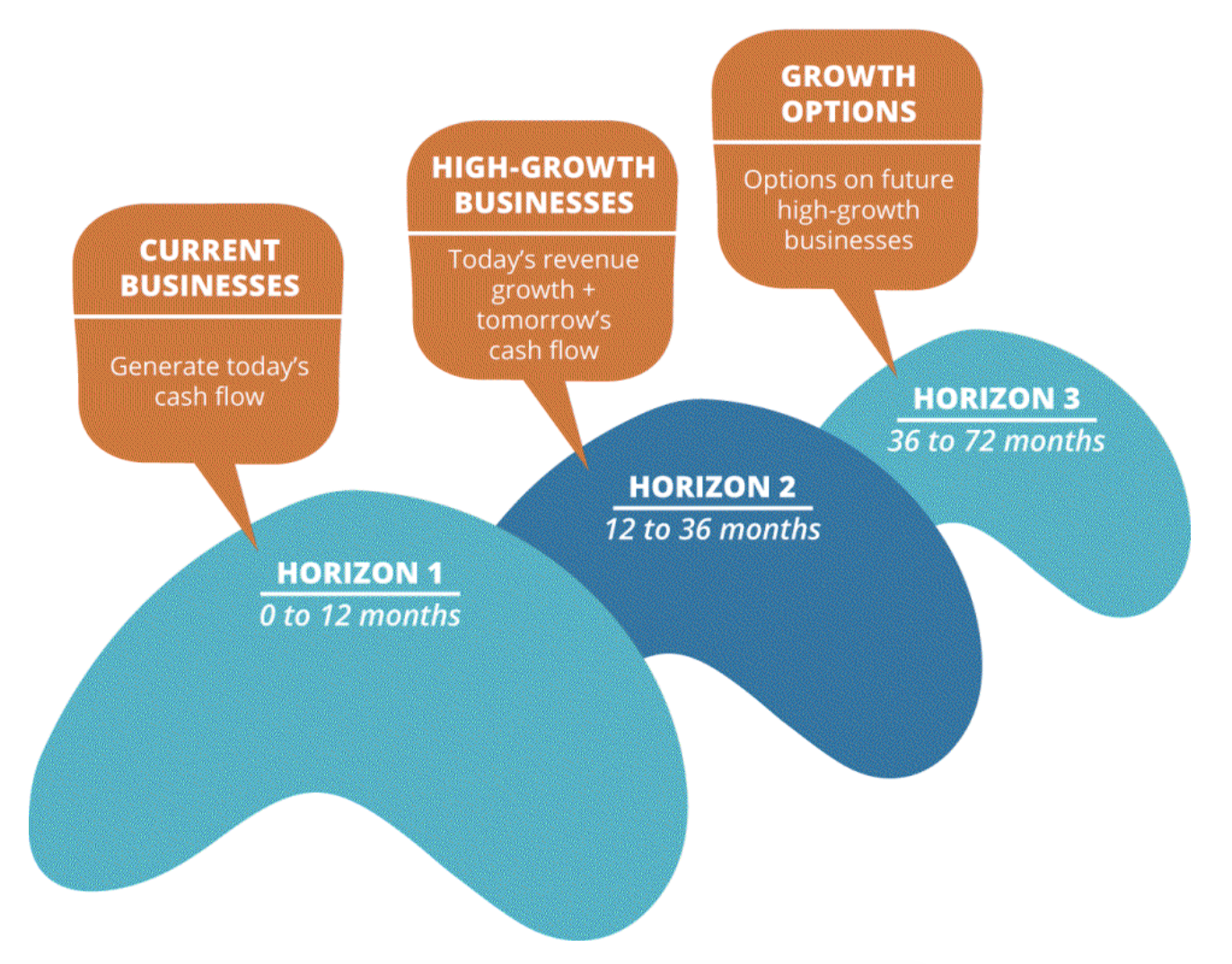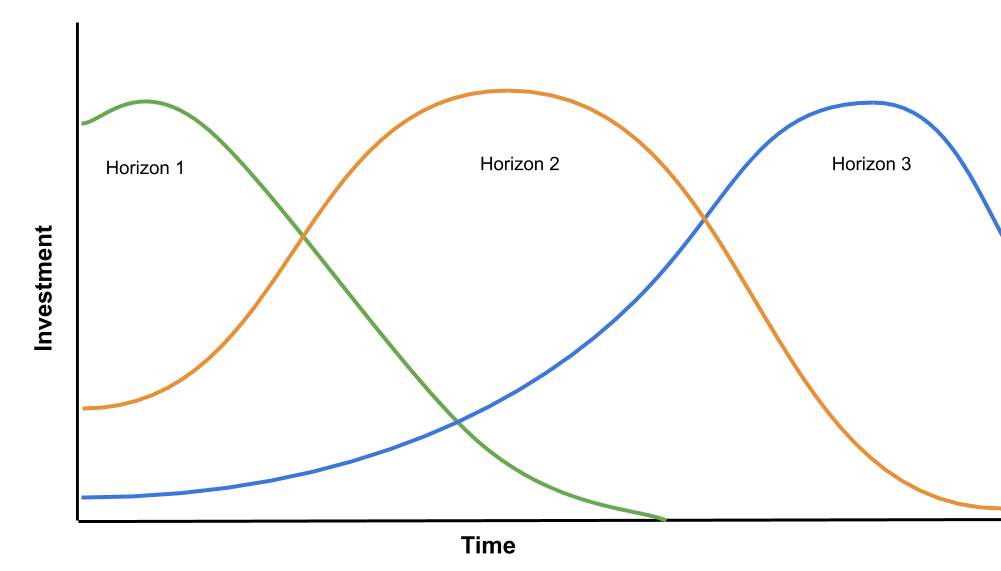
Three horizons
January 03, 2020Photo credit: https://flic.kr/p/rFRzzj
Note: This is the first post in a two-part exploration of the Three Horizon model.
In a prior post, I shared an approach I use for visualizing a team’s roadmap. Visual roadmaps have proven extremely useful for alignment, both within the team as well as with partners and customers. It’s a simple way to answer the question, _“what are we going to work on”? But I have found that it lacked insight into the evolution of the products themselves, and how they were evolving.
A roadmap represents the outcome of planning and prioritization exercises. It is the "work to be done" or said differently "what we have prioritized". A roadmap defines projects,…work with a start and end date. While most teams I have managed do project work, this work is often in support of improving the products they manage. A roadmap that is project focused doesn’t provide a product-centric view. When looking at a roadmap, you can’t tell how growing the team by two more engineers will impact the product’s evolution. McKinnsey’s three horizons model has proven extremely in helping me fill this gap.
Before exploring how I use the three horizons model, I will provide an intro to the three horizons model.
McKinnsey’s three horizons model
I was introduced to the McKinnsey three horizon model while reading Lean Enterprise. The three horizons model proposes that leaders should think about investments in the company’s product portfolio across three separate horizons. Each horizon provides different timeframes on expected returns, as well as differing levels of risk.
-
The first horizon is the company’s current dominant product in the market. Investments in first horizon products are expected to yield returns sometime within the next 12 months. Apple’s improvements to the iPhone, their dominant product, is an example of first horizon investments.
-
The second horizon is the company’s emerging business or new product line. It may be seen as the company’s future by some, but it may yet need to cross the chasm. Investments in second horizon products are expected to yield results a year or two into the future (12 to 36 months from now). In sticking with the Apple example, you can imagine improvements to the Apple Watch or AirPods as examples of second horizon investments.
-
The third horizon represents a completely new business that may not be defined as of yet. The company may be trying to determine what the market wants. This is the realm of Lean Startup techniques. Investments into the third horizon will yield results years from now. You can think of this horizon as market disruptions. For Apple, I haven’t a clue what this may be…but I suspect they may have an idea.
Balancing investments
One of the tenets of this model is balancing investments across all three horizons concurrently. Investing in a horizon one product line alone will yield near term results, but may forfeit the company’s future growth. Conversely, over investing in a product that has yet to be proven marketable could also destroy the company’s future. Leaders need to devise an investment strategy that optimizes both short, medium and long term growth.
If you spend some time searching the internet, you will find a number of recommended investment ratios across the three horizons. In the book Lean Enterprise, they highlight Intuit’s 70-20-10 investment ratio. 70% of their workforce is focused on horizon one, 20% on horizon two and 10% on horizon three. I have seen other articles that recommend a 40-40-20 investment ratio.
The specific ratios don’t matter for the purposes of this post. Each company will find a ratio that meets their own comfort level.
Rolling horizons

In the above visualization, the y-axis represents the amount of investment into a given horizon, and the x-axis represents time. As you can see, the curve of the horizons overlapping, implying concurrent investment. As time progresses, your investment in each horizon should increase or decrease. I expect the that real life curves aren’t as consistent as I’ve drawn them.
One of the interesting attributes of the three horizon model is how the horizons aren’t static. As time progresses, the company will find that horizon two has crossed the chasm and become the dominant product line in their portfolio. Which means, that investment into this horizon will yield near term results, and you should likely increase.
This may also mean that your horizon three experiments are becoming clearer and you may increase your investment in one, making it your new horizon two. You will continue to experiment in future product lines, so there should always be a horizon three.
It is also important to note that the y-axis can grow over time. Imagine if you will that your horizon one product line has flatlined in growth, but still produces revenue consistently (like Netflix’s DVD business). You may not want to kill this business, but minimize investments here. So, in order to ramp up investments in horizon two or three, you will need to grow. It’s possible that older company’s will have four or five horizons at any given time.
Up next
This post served as an introduction to the three horizon model as it applies to companies. My next post will explore how I have applied this model to engineering teams. Stay tuned.
Share this: